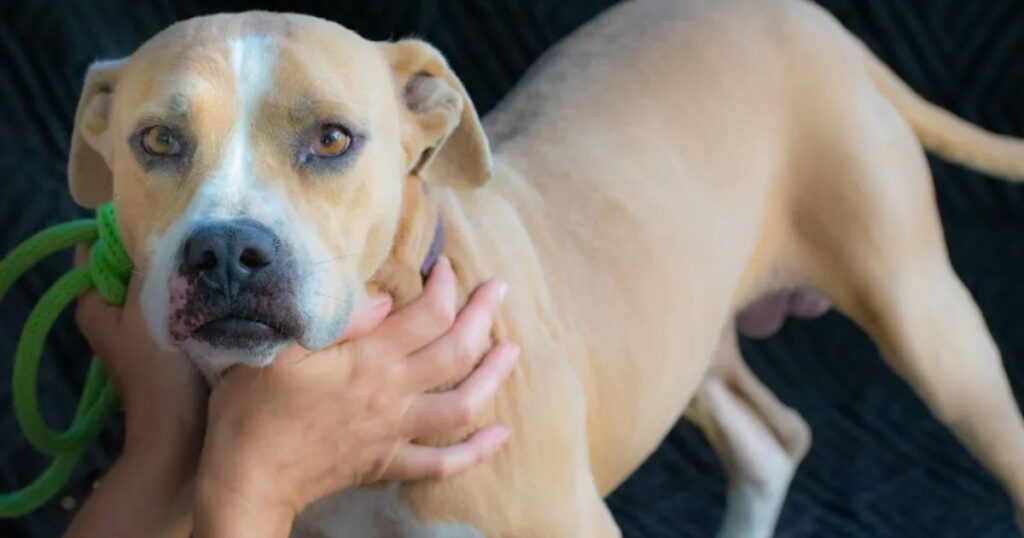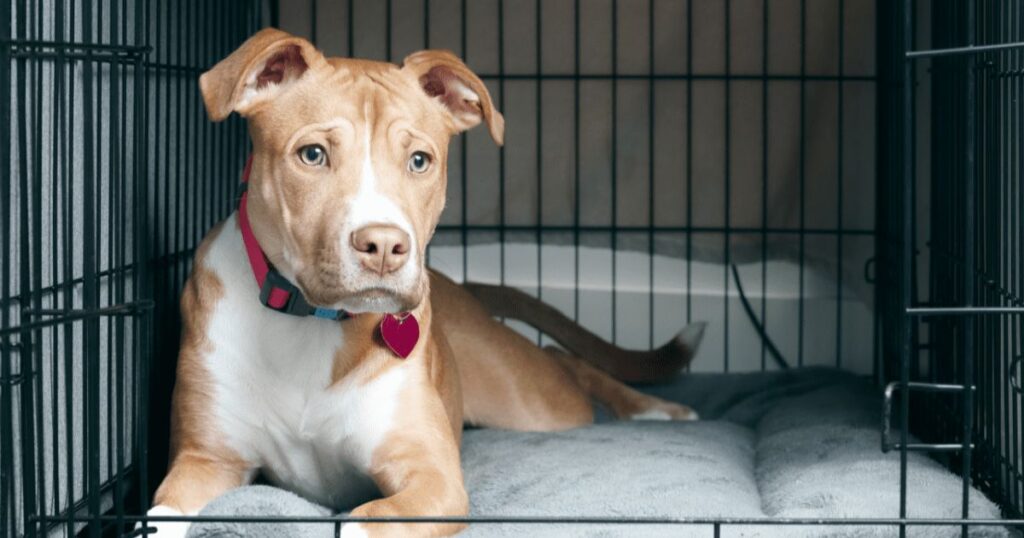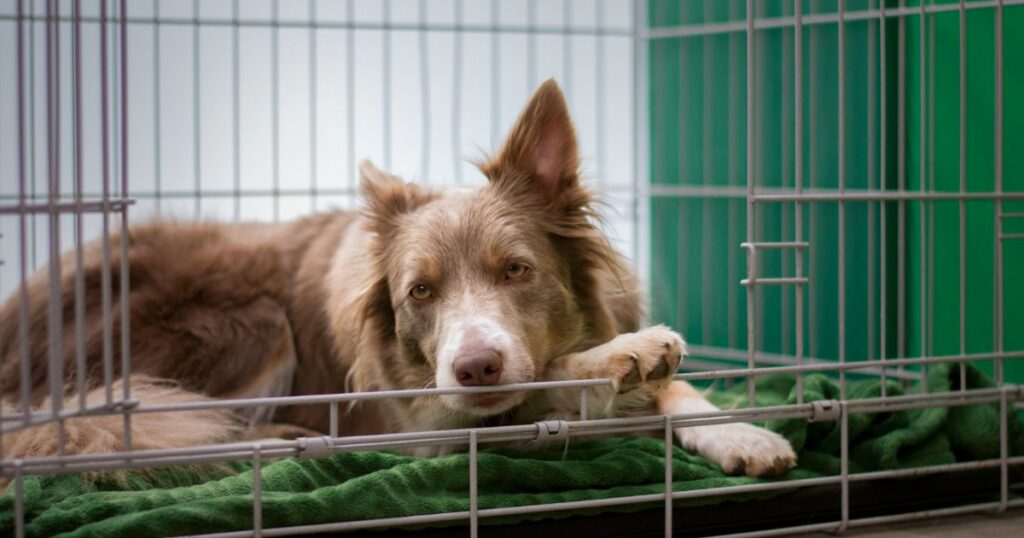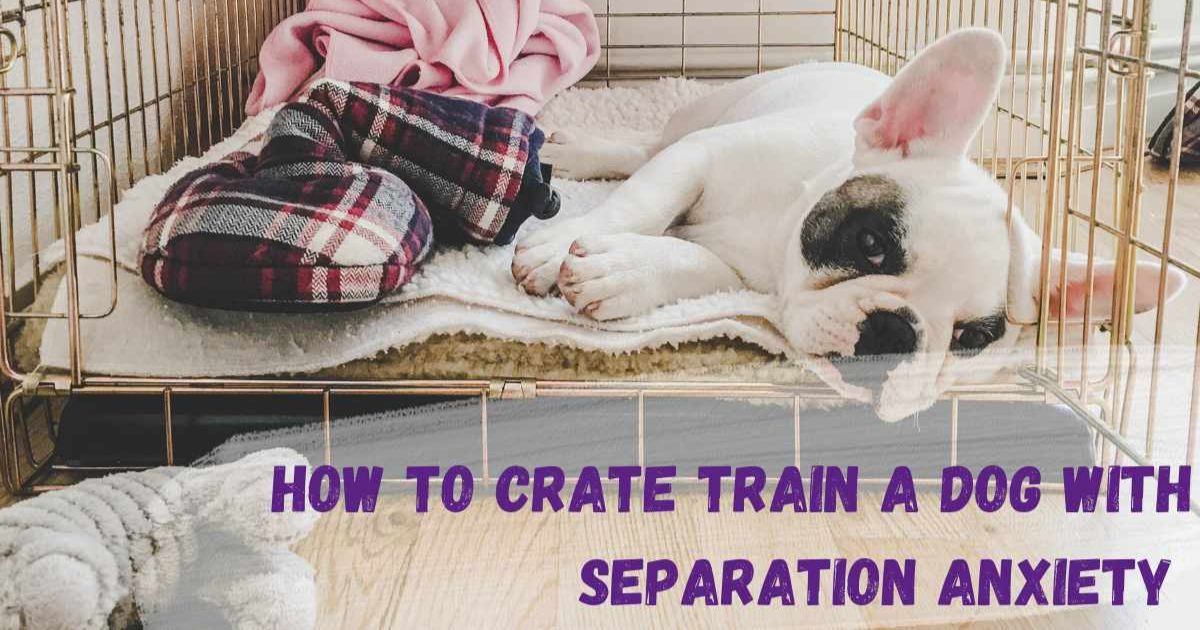Crate training a rescue dog with separation anxiety requires a delicate and patient approach to help the canine companion overcome past traumas. The process involves gradually introducing the crate, focusing on building positive associations and understanding the unique needs of a dog with separation anxiety. The goal is to create a safe and comforting space within the crate, providing the rescue dog with a sense of security and predictability.
By incorporating elements such as appropriate crate selection, comforting sounds, engaging toys, and familiar scents, caregivers can tailor the training to address the specific challenges faced by dogs who have experienced shelter life or abandonment.Choosing the right crate size is crucial, with considerations for the dog’s comfort and preference. Introducing the crate in a positive light such as incorporating meals and treats within the crate, helps foster a favorable association.
Additionally, recognizing and addressing triggers for anxiety, coupled with desensitization techniques, contribute to the successful integration of crate training for rescue dogs. This comprehensive and compassionate approach, coupled with consistency and routine, aims to empower rescue dogs with separation anxiety to find solace and build confidence in their new homes.
Why Crate Train A Rescue Dog With Separation Anxiety?
Crate training a rescue dog with separation anxiety serves as a valuable tool to address the unique challenges faced by dogs with a history of abandonment or shelter life. Many rescue dogs come with a baggage of anxiety, and the crate provides a controlled environment that aids in their adjustment to a new home. While it is important to note that severe separation anxiety may not be completely managed by crate training alone, a gradual and positive introduction to the crate can significantly contribute to a dog’s emotional well being.
Shelters often confine dogs to crates for extended periods and the crate can be perceived as a familiar and secure space for rescue dogs. By carefully implementing crate training, caregivers can help these dogs overcome fears associated with isolation and establish a positive association with being alone. The controlled nature of the crate allows for the prevention of stress inducing behaviors and helps the dog develop a sense of routine, predictability and security.
In essence, crate training provides rescue dogs with separation anxiety a tangible and safe haven, fostering a conducive environment for them to learn how to cope with being alone. When approached with patience, empathy and a focus on building positive associations, crate training becomes an essential component in helping rescue dogs overcome the emotional hurdles tied to their past experiences.
Help Your Rescue Dog Adjust
Helping your rescue dog adjust to a new environment involves a thoughtful and patient approach. Implementing strategies to ease their transition can make a significant difference in their well being. Here are key steps to assist your rescue dog in adjusting.
Stop the Feedback Loop
When a rescue dog exhibits anxious behaviors, it is crucial to break the feedback loop that reinforces their stress. This involves avoiding excessive attention or reassurance during moments of distress. Instead, provide comfort and attention when the dog is calm, gradually helping them disconnect anxiety from attention seeking behaviors. Consistency in responses helps the dog understand that calm behavior is rewarded, contributing to a more balanced emotional state.
Create a Safe Place
Establishing a designated safe space is essential for a rescue dog to retreat to when feeling overwhelmed. This can be a crate, a cozy bed or a specific area in the home. Ensure the space is comfortable, quiet, and equipped with familiar items like toys or a soft blanket. By allowing the dog to associate this area with safety and relaxation, they can voluntarily seek solace when needed, contributing to a sense of security.
Build a Routine
Dogs thrive on routine and rescue dogs, in particular, benefit from the predictability of daily activities. Establish a consistent daily schedule for feeding, walks, playtime and rest. Routine helps create a stable environment, reducing uncertainty and anxiety for the dog. As they become familiar with the daily rhythm, they gain a sense of predictability, making it easier for them to adapt to their new surroundings.
By incorporating these steps into your approach, you can provide your rescue dog with the stability and support needed for a smoother transition into their new home. Each dog is unique, so observing their behaviors and adjusting your strategies accordingly will help tailor your approach to their specific needs.
You Might Want To Check: Javaughn J. Porter ( Blueface’s son ) Everything to Know
Choosing the Right Crate(s) for a Rescue Dog with Separation Anxiety
Selecting the appropriate crate is a crucial step in effectively crate training a rescue dog with separation anxiety. The size of the crate plays a vital role and the general guideline is to choose one that allows the dog to stand, turn around and lie down comfortably, creating a cozy and den-like space. However, some rescue dogs, particularly those with separation anxiety, may benefit from a slightly larger crate that provides more room for engagement with toys and treats.
When deciding between plastic and metal crates, consider specific factors related to separation anxiety. Metal crates offer greater visibility, allowing the dog to see its surroundings, while plastic crates provide darkness and privacy, which some dogs find comforting. Noise sensitivity is another factor, as metal crates may produce more sound due to joint movements, potentially affecting dogs with separation anxiety.
A gradual introduction to the crate is essential, and many plastic crates allow for a slow start by connecting the top and bottom halves separately. Regardless of the crate type, it is advisable to prop the door open initially to prevent the dog from feeling trapped and to avoid startling them. In the case of metal crates, having two latches adds an extra layer of security.
Several crate options are available, catering to different preferences. For example, the BestPet metal crate, equipped with double doors, facilitates easy positioning within the house. Alternatively, the Petmate Ultra Vari Dog Kennel offers a secure locking mechanism and good airflow for those opting for a plastic crate. In certain situations, having multiple crates in different rooms may aid in the training process, allowing the dog to gradually adapt to a healthy distance without causing undue stress.
Ultimately, the choice of the right crate is pivotal in establishing a positive and effective crate training experience for a rescue dog with separation anxiety. Understanding the individual needs of the dog, considering factors such as size, noise sensitivity and preference for visibility or privacy, contributes to a successful crate training journey.
Size
Selecting the right size crate is a fundamental aspect of crate training for a rescue dog with separation anxiety. The general guideline is to choose a crate that provides enough space for the dog to stand, turn around, and lie down comfortably. This creates a snug and den-like environment, promoting a sense of security. However, some dogs, especially those with separation anxiety, may benefit from a slightly larger crate. A more spacious crate can offer room for engagement with toys and treats, providing a positive association with the crate.
Plastic vs. Metal
When deciding between plastic and metal crates, consider the specific needs and preferences of the rescue dog with separation anxiety.
Metal Crate
Visibility:Metal crates offer more visibility through the slats, allowing the dog to see its surroundings. This can be comforting for some dogs, and it enables owners to monitor the dog’s behavior.
Noise: Metal crates may produce more noise due to the movement of joints. Dogs with separation anxiety who are sensitive to sounds might find this challenging.
Cleaning: Metal crates are easy to clean, as they can be sprayed down for sanitization.
Plastic Crate
Privacy:Plastic crates provide darkness and privacy, which some dogs find soothing. It creates a more enclosed and secure feeling for the dog.
Noise:Plastic crates are quieter compared to metal crates, which can be beneficial for noise-sensitive dogs.
Cleaning:Plastic crates may require more thorough cleaning and occasional disassembly for maintenance.
How Many Crates
In certain situations, having multiple crates can be beneficial, especially for dogs who want to be close to their owners at all times.
- Dogs that crave constant proximity may benefit from having crates in different rooms of the house.
- Multiple crates allow the dog to gradually adapt to spending time at a healthy distance without causing undue stress.
- This approach aids in creating a positive association with the crate, as the dog learns to tolerate separation in various environments.
Understanding the individual needs of the rescue dog and considering factors such as size, noise sensitivity and the need for visibility or privacy will guide the selection of the most suitable crate and contribute to a successful crate training experience.

Setting up a Crate for a Rescue Dog with Separation Anxiety
Setting up a crate for a rescue dog with separation anxiety requires thoughtful consideration to make it a safe and comforting space. Here are key elements to focus on.
Bedding
Choose soft and comfortable bedding for the crate. The goal is to provide a cozy and inviting space for the dog to rest. Consider the dog’s preferences, whether they enjoy plush beds, blankets or a combination. Ensure that the bedding is easily washable to maintain cleanliness.
Sounds
Introduce calming sounds to create a soothing environment. Background music, white noise, or recordings of nature sounds can help drown out external noises that might trigger anxiety. Gradually acclimate the dog to these sounds during positive crate experiences to associate them with comfort.
Toys
Include a variety of toys to keep the dog mentally stimulated. Interactive toys, chew toys and comfort items can distract the dog and alleviate anxiety. Rotate the toys regularly to maintain their novelty and keep the dog engaged. Be mindful of the dog’s preferences and choose toys that are safe and durable.
Scents
Incorporate familiar scents to make the crate more reassuring. Use items with the owner’s scent, such as unwashed clothing or bedding. This helps create an association between the crate and the owner, promoting a sense of security for the anxious dog.
Calming Jackets or Vests
Consider using a calming jacket or vest designed to apply gentle pressure. This mimics the feeling of being held, offering comfort to dogs with separation anxiety. Ensure the garment fits properly and does not cause any discomfort. These jackets can be particularly beneficial during the initial stages of crate training.
Camera
Install a camera near the crate to monitor the dog’s behavior remotely. This allows owners to observe how the dog responds to being crated and assess their comfort level. It also provides reassurance for owners who can check on their rescue dog when away from home.
By incorporating these elements into the crate setup, owners can create a positive and secure environment for their rescue dog with separation anxiety. Patience and consistency are key during the crate training process, gradually helping the dog build confidence and ease into being alone.

Prep Tips For Success in Crate Training a Rescue Dog
Talk to Your Vet
Before embarking on crate training, consult with your veterinarian. Discuss your rescue dog’s history, any health concerns and seek advice on the most suitable approach. Your vet can provide valuable insights and recommend specific strategies tailored to your dog’s needs.
Exercise
Prioritize regular exercise to help channel your rescue dog’s energy and reduce anxiety. A tired dog is more likely to be calm and receptive to crate training. Incorporate daily walks, playtime and mental stimulation activities to create a balanced routine.
Establish Leadership
Establish yourself as a calm and assertive leader in your dog’s eyes. Dogs often feel more secure when they have a confident leader. Consistency in commands, routines and rules will help your rescue dog understand boundaries, contributing to a sense of security during crate training.
Training
Implement basic obedience training to enhance communication and build trust between you and your rescue dog. Focus on commands like sit, stay and come, reinforcing positive behavior. Incorporate training sessions around the crate, gradually associating it with positive experiences.
Manage Other Pets
If you have other pets at home, introduce them to the crate training process gradually. Monitor interactions between the rescue dog and existing pets to ensure a positive and safe environment. Separate feeding areas and provide individual attention to each pet during the initial stages of crate training.
Crate training is a gradual process and each dog responds differently. Tailor your approach based on your rescue dog’s personality, history, and specific needs. Consistency, positive reinforcement, and patience are crucial elements in successfully acclimating your rescue dog to the crate and alleviating separation anxiety.
You May Also Like: Meet LeBron James’ father Anthony McClelland |Where is he now?
Crate Training a Rescue Dog
Introduce the Crate
Begin by introducing the crate as a positive and inviting space. Leave the crate door open and allow your rescue dog to explore it at their own pace. Place treats, toys or a comfortable bed inside to create a positive association with the crate.
Identify Their Triggers
Observe and identify any specific triggers that may cause anxiety in your rescue dog. This could include certain noises, activities or changes in the environment. Understanding these triggers helps you address the root causes of anxiety during crate training.
Break the Anxious Cycle
Implement strategies to break the anxious cycle. Gradually expose your dog to their triggers in a controlled manner, rewarding calm behavior. This desensitization process helps reduce anxiety by creating positive associations with previously anxiety-inducing stimuli.
Crate Them
Once your dog is comfortable with the crate, start creating them for short periods while you are at home. Use treats and positive reinforcement to encourage them to enter the crate willingly. Keep initial crate sessions brief and gradually increase the duration as your dog becomes more accustomed.
Create and Stick to a Routine
Establishing a consistent routine is crucial for a rescue dog with anxiety. Incorporate crate time into their daily schedule at predictable intervals. A routine provides a sense of security and predictability, which can help alleviate anxiety associated with crate training.
Gradual Alone Time
Introduce short periods of alone time in the crate. Start by leaving the room for a few minutes and gradually extend the duration. Use treats and comforting items to create a positive experience. This gradual approach helps your dog build confidence and reduces separation anxiety.
Seek Professional Guidance
If your rescue dog’s anxiety persists or worsens, consider seeking guidance from a professional dog trainer or behaviorist. They can assess your dog’s specific needs and provide tailored strategies to address anxiety issues during crate training.
Be Patient and Positive
Crate training a rescue dog requires patience and a positive attitude. Celebrate small victories and progress, and avoid scolding or punishing your dog for anxiety-related behaviors. Positive reinforcement and a calm approach contribute to a successful crate training experience.
Remember that every rescue dog is unique and crate training timelines may vary. Adapt your approach based on your dog’s individual needs and provide them with the time and support needed to build confidence and comfort in their crate.

Conclusion
In conclusion, crate training a rescue dog with separation anxiety is a compassionate and essential process that requires patience, understanding, and a tailored approach. By carefully selecting the right crate, gradually introducing the space and addressing the specific needs of a rescue dog, pet owners can play a pivotal role in helping their furry companions overcome anxiety and build a sense of security.
The key lies in creating positive associations with the crate, identifying triggers and implementing gradual training techniques. Consistency, routine and seeking professional guidance when needed contribute to a successful crate training experience. Ultimately, with time, positive reinforcement and a supportive environment, rescue dogs can learn to find comfort and safety in their crates, providing them with a secure haven during times of separation.
Frequently Asked Questions
How do I choose the right crate for a rescue dog with separation anxiety?
Select a crate that is appropriately sized for your dog, providing enough room to stand, turn around, and lie down comfortably. Consider factors like material (plastic vs. metal) and the dog’s preference for visibility or privacy.
What steps can I take to introduce a rescue dog to the crate without causing stress?
Gradual introduction is key. Begin by making the crate a positive and inviting space, using treats and toys. Avoid forcing the dog inside and let them explore the crate at their own pace to create positive associations.
How can I address triggers that contribute to a rescue dog’s separation anxiety?
Identifying triggers involves observing your dog’s behavior. It may be related to specific actions or cues before departure. Implement gradual desensitization techniques to break the association between triggers and anxiety.
Are there specific routines that aid in crate training a rescue dog with separation anxiety?
Establishing a consistent routine builds predictability, which can help ease anxiety. Incorporate crate time into daily activities, ensuring it becomes a natural part of the dog’s schedule, reducing stress associated with separation.
When should I seek professional help for crate training a rescue dog with severe separation anxiety?
If your rescue dog exhibits extreme anxiety or if your attempts at crate training are not yielding positive results, consult with a professional dog trainer or a veterinarian. They can provide guidance and potentially recommend additional interventions to address severe cases of separation anxiety.

Passionate wordsmith navigating the currents of trending topics. Crafting compelling narratives that captivate and inform, I explore the pulse of contemporary issues with creativity and insight. Join the journey











